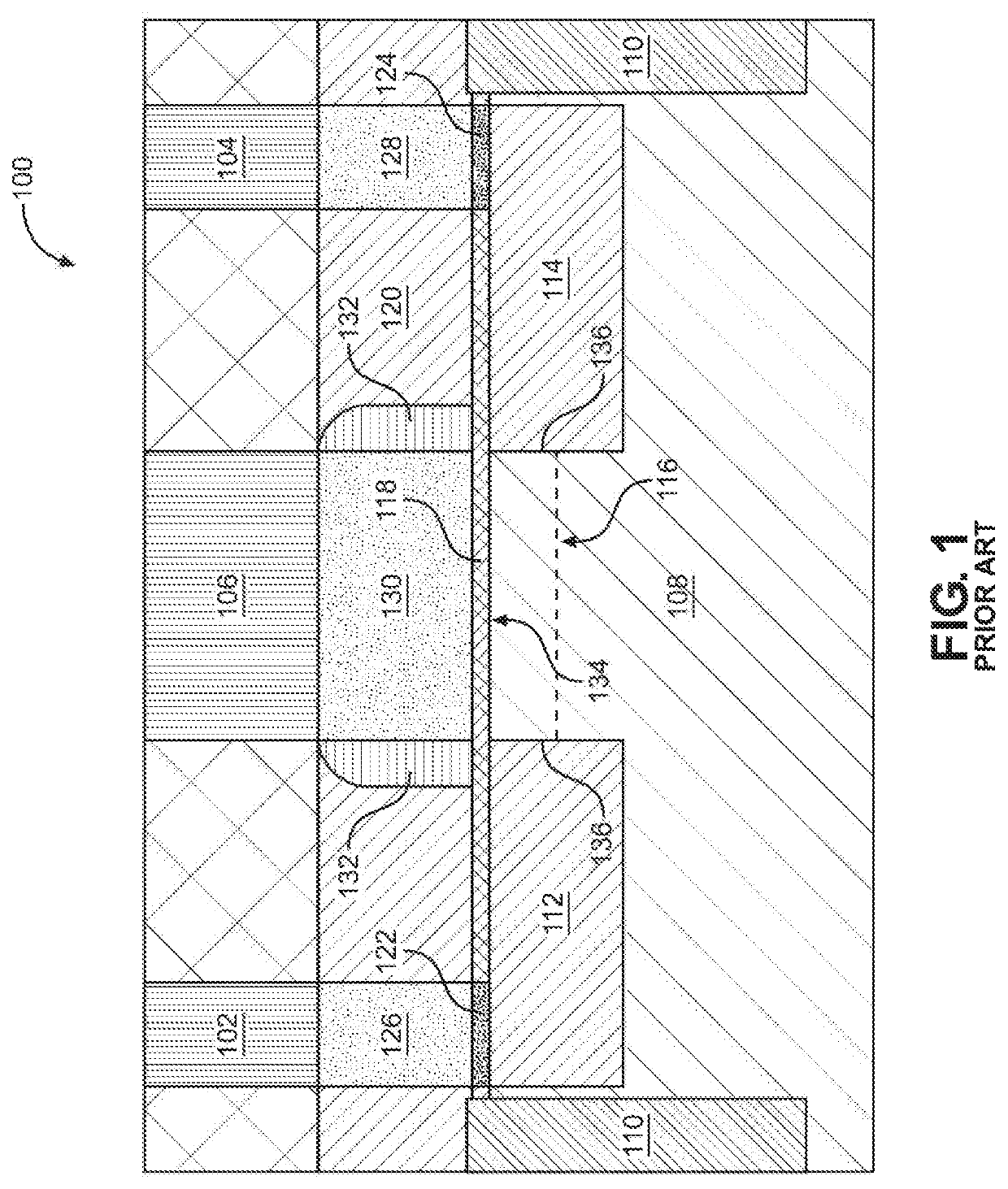Controlling dimensions of a negative capacitance layer of a gate stack of a field-effect transistor (FET) to increase power density
a field-effect transistor and negative capacitance layer technology, applied in the field of field-effect transistors, can solve the problems of increasing the size of the mosfet, and achieve the effects of increasing power density, negative capacitance, and reducing the amount of charg
- Summary
- Abstract
- Description
- Claims
- Application Information
AI Technical Summary
Benefits of technology
Problems solved by technology
Method used
Image
Examples
Embodiment Construction
[0024]With reference now to the drawing figures, several exemplary aspects of the present disclosure are described. The word “exemplary” is used herein to mean “serving as an example, instance, or illustration.” Any aspect described herein as “exemplary” is not necessarily to be construed as preferred or advantageous over other aspects.
[0025]Before discussing embodiments related to controlling dimensions of a negative capacitance layer of a gate stack of a Field-Effect Transistor (FET) to increase power density, capacitance is discussed generally to provide a background for negative capacitors. A discussion of exemplary aspects of the present disclosure begins below with reference to FIG. 2A.
[0026]Generally, capacitors include a dielectric material between two plates, upon which charge can accumulate. The capacitance of a given capacitor is the rate of increase of charge with voltage. Thus, in a conventional capacitor, charge increases on each plate of the capacitor as voltage incre...
PUM
| Property | Measurement | Unit |
|---|---|---|
| length | aaaaa | aaaaa |
| length | aaaaa | aaaaa |
| length | aaaaa | aaaaa |
Abstract
Description
Claims
Application Information
 Login to View More
Login to View More - R&D
- Intellectual Property
- Life Sciences
- Materials
- Tech Scout
- Unparalleled Data Quality
- Higher Quality Content
- 60% Fewer Hallucinations
Browse by: Latest US Patents, China's latest patents, Technical Efficacy Thesaurus, Application Domain, Technology Topic, Popular Technical Reports.
© 2025 PatSnap. All rights reserved.Legal|Privacy policy|Modern Slavery Act Transparency Statement|Sitemap|About US| Contact US: help@patsnap.com



